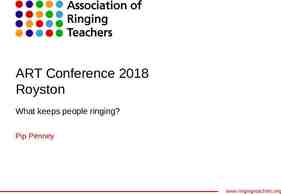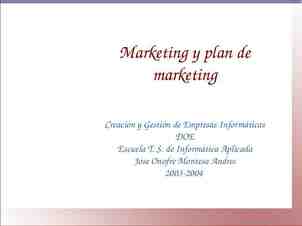CISC1100: Binary Numbers Fall 2014, Dr. Zhang 1
20 Slides711.50 KB
CISC1100: Binary Numbers Fall 2014, Dr. Zhang 1
Numeral System A way for expressing numbers, using symbols in a consistent manner. "11" can be interpreted differently: 2 in the binary symbol: three in the decimal symbol: eleven “LXXX” represents 80 in Roman numeral system For every number, there is a unique representation (or at least a standard one) in the numeral system
Modern numeral system Positional base 10 numeral systems Positional number system (or place value system) use same symbol for different orders of magnitude For example, “1262” in base 10 3 Mostly originated from India (Hindu-Arabic numeral system or Arabic numerals) the “2” in the rightmost is in “one’s place” representing “2 ones” The “2” in the third position from right is in “hundred’s place”, representing “2 hundreds” “one thousand 2 hundred and sixty two” 1*103 2*102 6*101 2*100
Modern numeral system (2) In base 10 numeral system there is 10 symbols: 0, 1, 2, 3, , 9 Arithmetic operations for positional system is simple 4 Algorithm for multi-digit addition, subtraction, multiplication and division This is a Chinese Abacus (there are many other types of Abacus in other civilizations) dated back to 200 BC
Other Positional Numeral System Base: number of digits (symbols) used in the system. Base 2 (i.e., binary): only use 0 and 1 Base 8 (octal): only use 0,1, 7 Base 16 (hexadecimal): use 0,1, 9, A,B,C,D,E,F Like in decimal system, Rightmost digit: represents its value times the base to the zeroth power The next digit to the left: times the base to the first power The next digit to the left: times the base to the second power For example: binary number 10101 1*24 0*23 1*22 0*21 1*20 16 4 1 21 5
Why binary number? Computer uses binary numeral system, i.e., base 2 positional number system Each unit of memory media (hard disk, tape, CD ) has two states to represent 0 and 1 Such physical (electronic) device is easier to make, less prone to error 6 E.g., a voltage value between 0-3mv is 0, a value between 3-6 is 1
Binary Decimal Interpret binary numbers (transform to base 10) 1101 1*23 1*22 0*21 1*20 8 4 0 1 13 Translate the following binary number to decimal number 7 101011
Generally you can consider other bases Base 8 (Octal number) Use symbols: 0, 1, 2, 7 Convert octal number 725 to base 10: 7*82 2*81 5 Now you try: (1752)8 Base 16 (Hexadecimal) 8 Use symbols: 0, 1, 2, 9, A, B, C,D,E, F (10A)16 1*162 10*160 .
Binary number arithmetic Analogous to decimal number arithmetics How would you perform addition? Subtraction: 9 0 0 0 0 1 1 1 1 10 (a carry-over) Multiple digit addition: 11001 101 Basic rule: Borrow one from next left digit
From Base 10 to Base 2: using table Input : a decimal number Output: the equivalent number in base 2 Procedure: Write a table as follows 1. Find the largest two’s power that is smaller than the number 1. 2. 3. 4. Decimal number 234 largest two’s power is 128 Fill in 1 in corresponding digit, subtract 128 from the number 106 Repeat 1-2, until the number is 0 Fill in empty digits with 0 10 51 2 25 6 Result is 11101010 12 8 64 32 16 8 4 2 1 1 1 1 0 1 0 1 0
From Base 10 to Base 2: the recipe Input : a decimal number Output: the equivalent number in base 2 Procedure: 1. 2. 3. 4. 11 Divide the decimal number by 2 Make the remainder the next digit to the left of the answer Replace the decimal number with the quotient If quotient is not zero, Repeat 1-4; otherwise, done
Convert 100 to binary number 100 % 2 0 12 % 2 0 last digit 4th last digit 100 / 2 50 12 / 2 6 50 % 2 0 6%2 0 second last 5th last digit digit 6/2 3 50/2 25 3%2 1 25 % 2 1 6th last digit 3rd last digit 3 / 2 1 25 / 2 12 1%2 1 7th last digit The result is 1100100 1/2 0 12 Stop as the decimal #
Data Representation in Computer In modern computers, all information is represented using binary values. Each storage location (cell): has two states low-voltage signal 0 High-voltage signal 1 i.e., it can store a binary digit, i.e., bit Eight bits grouped together to form a byte Several bytes grouped together to form a word Word length of a computer, e.g., 32 bits computer, 64 bits computer 13
Different types of data Numbers Text Whole number, fractional number, ASCII code, unicode Audio Image and graphics video How can they all be represented as binary strings? 14
Representing Numbers Positive whole numbers We already know one way to represent them: i.e., just use base 2 number system All integers, i.e., including negative integers Set aside a bit for storing the sign 1 for , 0 for – Decimal numbers, e.g., 3.1415936, 100.34 Floating point representation: 15 sign * mantissa * 2 exp 64 bits: one for sign, some for mantissa, some for exp.
Representing Text Take English text for example Text is a series of characters How many bits do we need to represent a character? letters, punctuation marks, digits 0, 1, 9, spaces, return (change a line), space, tab, 1 bit can be used to represent 2 different things 2 bit 2*2 22 different things n bit 2n different things In order to represent 100 diff. character Solve 2n 100 for n x log 100 2 n , here the refers to the ceiling of x, i.e., the smallest integer that is larger than x: 16 log 2 100 6.6438 7
There needs a standard way ASCII code: American Standard Code for Information Interchange ASCII codes represent text in computers, communications equipment, and other devices that use text. 128 characters: 17 33 are non-printing control characters (now mostly obsolete)[7] that affect how text and space is processed 94 are printable characters space is considered an invisible graphic
ASCII code 18
There needs a standard way Unicode international/multilingual text character encoding system, tentatively called Unicode Currently: 21 bits code space How many diff. characters? Encoding forms: 19 UTF-8: each Unicode character represented as one to four 8-but bytes UTF-16: one or two 16-bit code units UTF-32: a single 32-but code unit
In Summary 20

























